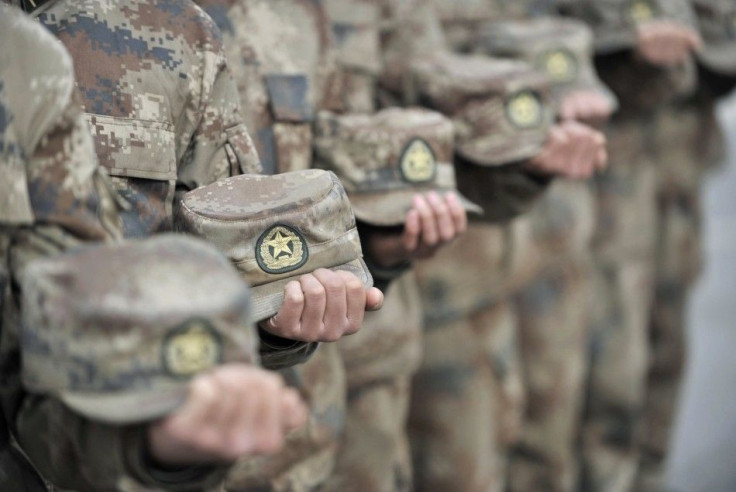China to boost military spending: Gunning for the US?

China is ramping up its military spending at a time its financial firepower is increasingly in focus after it unseated Japan as the second biggest economy in the world.
A Chinese official said on Friday the country will increase military spending 12.7 percent this year after a drop in spending last year owing to the financial crisis.
An analysis of comparative military capabilities of the world's leading nations will reveal that if China is going ballistic in efforts to bolster its military, it's certainly gunning for the United States.
The conventional view is that it will take a long time for China to catch up with the U.S. in terms of firepower and that China's military strengths are disproportionate to its economic status. That could change if one of the most robust economies of the world is ready to foot bulging military bills, stockpile weapons and spend more on research.
Investor George Soros had warned last year that China's military ambitions could spawn a renewed arms race with the U.S., a prospect which he assessed was detrimental to the economies of both countries.
The United States remains the undisputed leader of our list thanks to their staying active in global hotspots, showcasing the world's largest navy and continuing to poor in gobs of money into defense, according to Global Firepower, which tracks the military capabilities of major powers.
It says that China has edged out Russia by a slim margin to emerge as the second mightiest military power in the world, thanks largely to its advantages in available manpower and financial capital.
China’s publicly reported military spending had risen only 7.5 percent in 2010, according to the New York Times. Li Zhaoxing, a Chinese parliamentary spokesman, said on Friday the increased spending will go for the acquisition of new weaponry and pay increases, while stressing that the country’s military “will not pose a threat to any country.”
China's military budget has seen a double digit growth since 1989, the year in which the Tiananmen Square uprising took place. Since that year, the military budget has risen by an average of 12.9 percent per year, NYT said, citing a GlobalSecurity.org report.
Li did highlight the point that China's military spending, which is less than two percent of the gross domestic product, is relatively low by world standards. For a comparison, the U.S. spends nearly five percent of its GDP on military.
HOW US, CHINA COMPARE
By all conventional standards, the U.S. has a far superior military than China’s. The U.S. also enjoys the additional advantage of having numerous military bases in strategically important parts of the world. However, one area where China has upper hand is the number of active military personnel. According to the Global Firepower, China has 2.25 million active soldiers while the U.S. has only 1.38 million.
The following is a comparison of each country' conventional military strengths as per Global Firepower data:
United States | China | |
Active Military Personnel | 1,385,122 | 2,255,000 |
Active Military Reserves | 1,458,500 | 800,000 |
Active Paramilitary | 453,000 | 3,969,000 |
Total Air-Based Weapons | 18,169 | 1,900 |
Total Land-Based Weapons | 29,920 | 31,300 |
Total Naval Units | 1,559 | 760 |
Towed Artillery Systems | 5,178 | 14,000 |
Merchant Marine Strength | 422 | 1,822 |
Major Ports and Terminals | 10 | 8 |
Aircraft Carriers | 11 | 1 |
Destroyers | 50 | 21 |
Frigates | 92 | 42 |
Submarines | 75 | 68 |
Mine Warfare Craft | 28 | 39 |
© Copyright IBTimes 2024. All rights reserved.





















